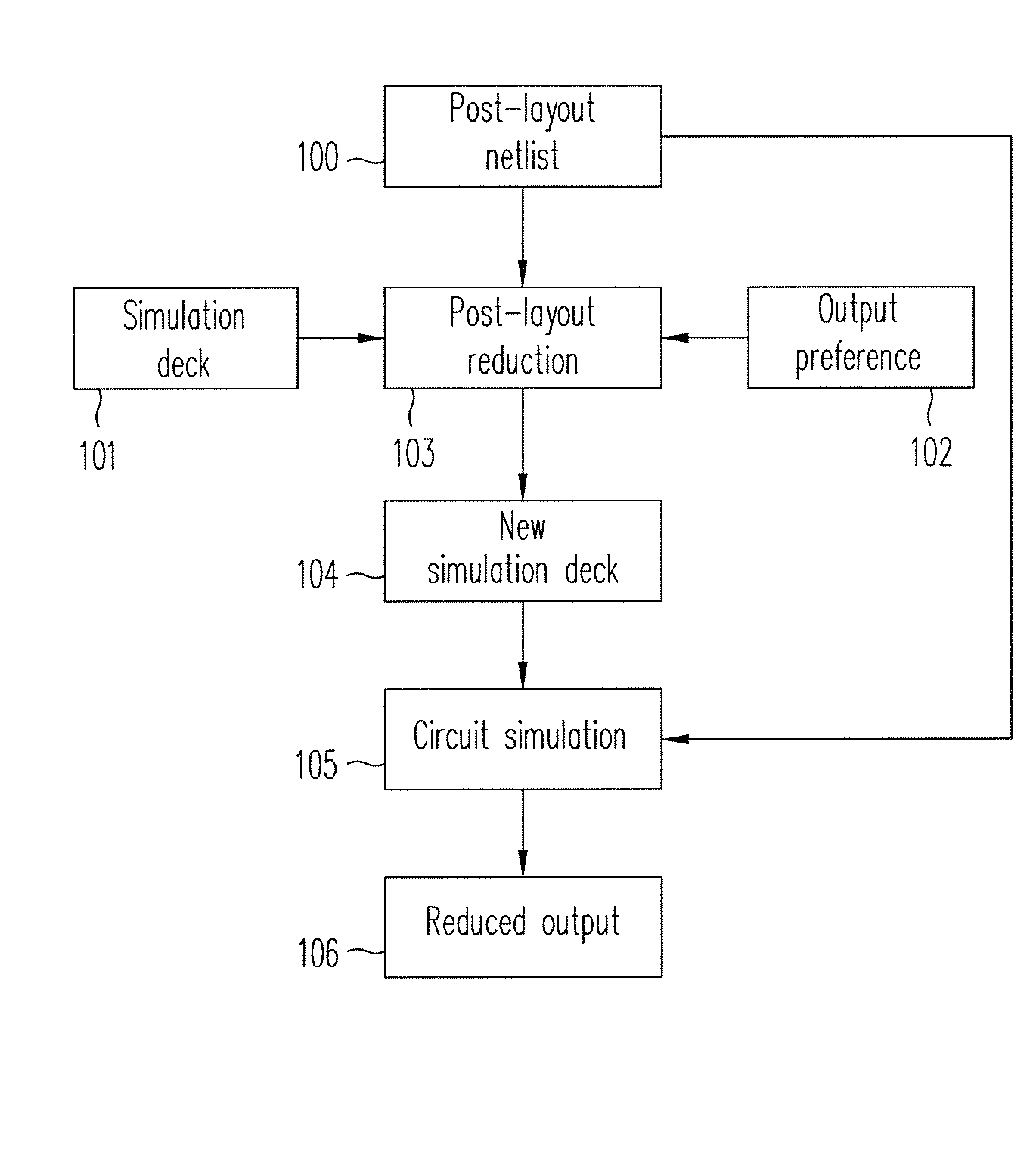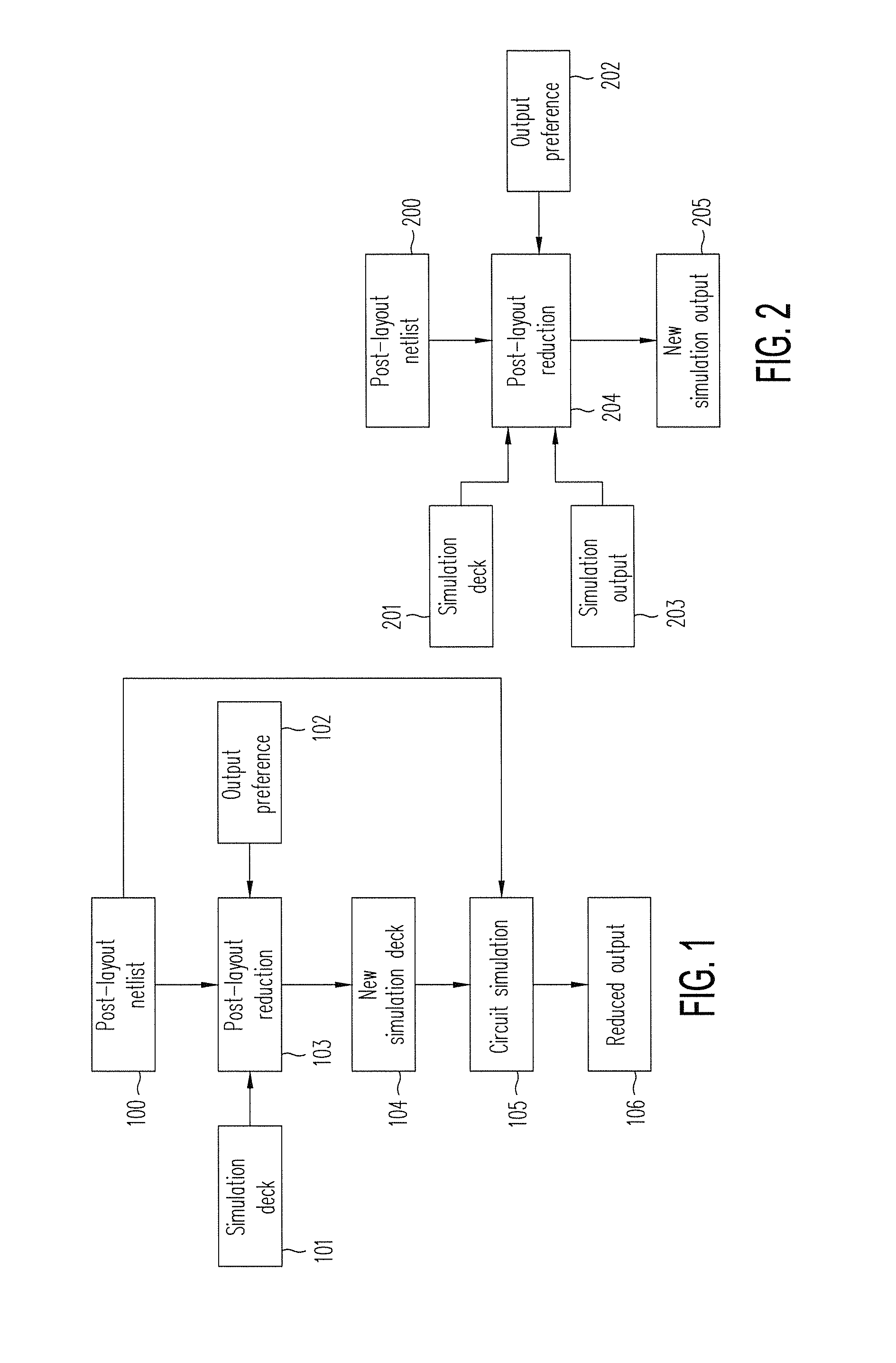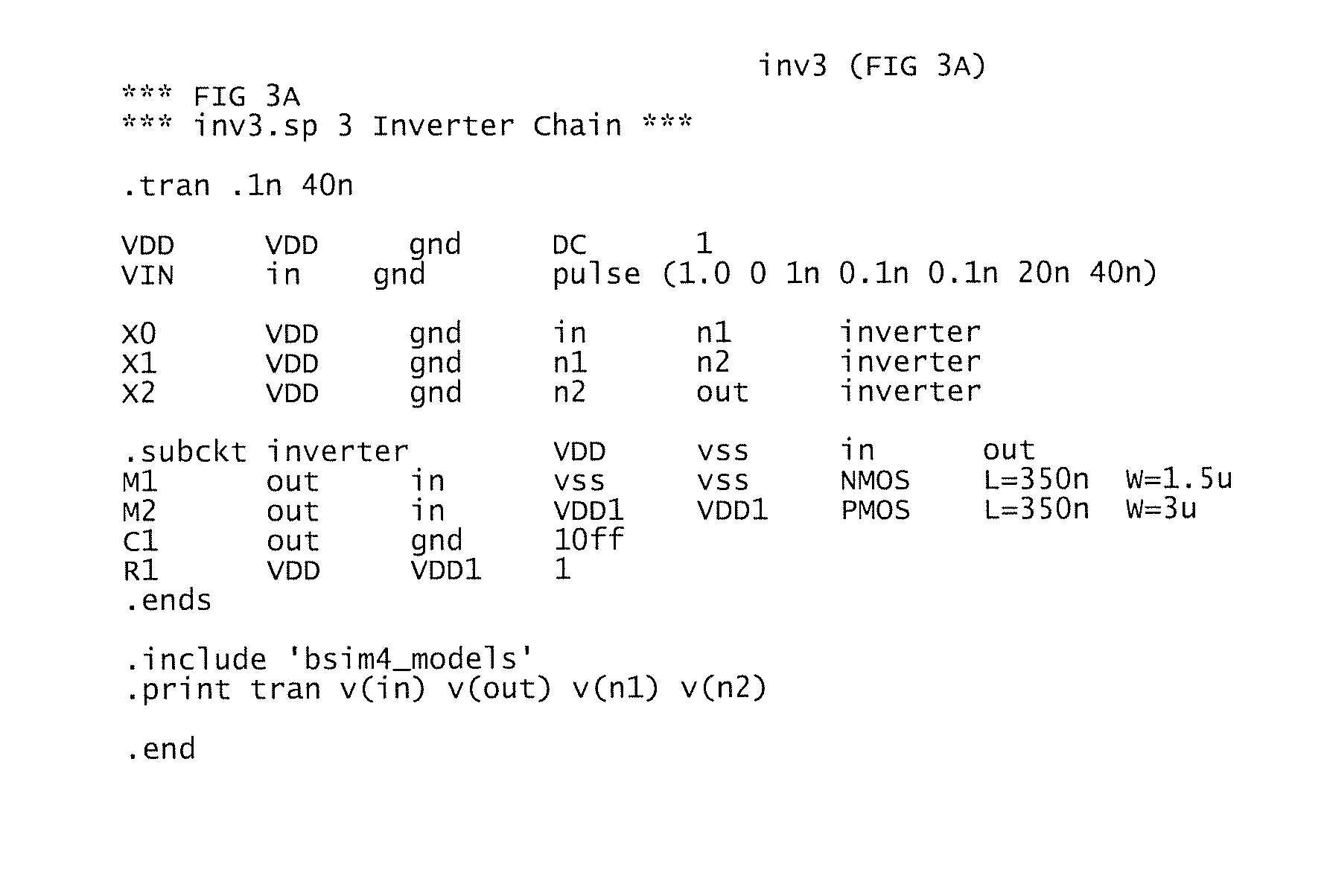Methods for reducing post layout circuit simulation results
- Summary
- Abstract
- Description
- Claims
- Application Information
AI Technical Summary
Benefits of technology
Problems solved by technology
Method used
Image
Examples
Embodiment Construction
[0048]Reference is now made in detail to one or more embodiments of the present invention. While the present invention is described in conjunction with these embodiments, such embodiments are not intended to be limiting the present invention. On the contrary, the present invention is intended to cover alternatives, variations, modifications and equivalents within the scope of the present invention, as defined in the accompanying claims.
[0049]Hierarchical and flattened pre-layout and post-layout circuit descriptions or netlists are illustrated by way of examples in FIGS. 3A-3E, FIGS. 4-5, and FIGS. 6A-6B.
[0050]FIG. 3A shows a typical SPICE-compatible netlist of a 3-inverter circuit. The netlist describes a circuit that includes MOS transistors, resistors, and capacitors; the netlist contains a sub-circuit definition of an inverter provided in the .subckt directive, and serially connected instances X0, X1 and X2 of the inverter sub-circuit, each of which contains two MOS transistors, ...
PUM
 Login to View More
Login to View More Abstract
Description
Claims
Application Information
 Login to View More
Login to View More - R&D
- Intellectual Property
- Life Sciences
- Materials
- Tech Scout
- Unparalleled Data Quality
- Higher Quality Content
- 60% Fewer Hallucinations
Browse by: Latest US Patents, China's latest patents, Technical Efficacy Thesaurus, Application Domain, Technology Topic, Popular Technical Reports.
© 2025 PatSnap. All rights reserved.Legal|Privacy policy|Modern Slavery Act Transparency Statement|Sitemap|About US| Contact US: help@patsnap.com



